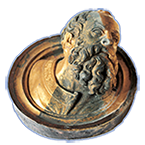Speaker
Description
The metallurgy of historic weapons such as swords is one of the most interesting topics in archaeometallurgy because these objects were manufactured, over the ages, using the highest quality materials and the most advanced technology. The compositional and microstructural characterization of swords, particularly steel swords, can hence allow us to learn about the technological skills reached by different civilizations. Neutron imaging and neutron diffraction are, to the author knowledge, among the best methods to quantify phase composition and microstructure, study morphology, identifying non-metallic inclusions, cracks and defects. Our research team performed a number of experiments using neutron imaging and neutron diffraction to reveal the characteristics of many artifacts from different civilizations, of which the production procedures are not yet fully clear. We studied the complex structure and the thermal and mechanical treatments applied to produce Japanese swords, the microstructure of wootz steel used to produce the “watered silk” pattern on Indo Persian swords, the multilayered Fe-Ni alloys used to produce the Indonesian keris. The results shown in this work allowed us to identify unique features that can shed new light on the manufacturing methods, thus increasing the level of our knowledge about the technological skills of such civilizations.

